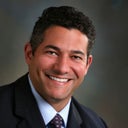I understand that they place some of the incisions inside the mouth and above the ear. Will this endoscopic mid-face lift help jowls?
Answers (17)
From board-certified doctors and trusted medical professionals

Dr. Philip S. Schoenfeld, MD, FACS
Board Certified Facial Plastic Surgeon
Answer
More Facelift Questions
See all Facelift Q&AWE SEND PRETTY
EMAILS
What’s trending? Who’s turning heads? Which TikTok myths need busting? We’ve got you. No fluff, no gatekeeping—just real talk. Get our free, unfiltered newsletter.





